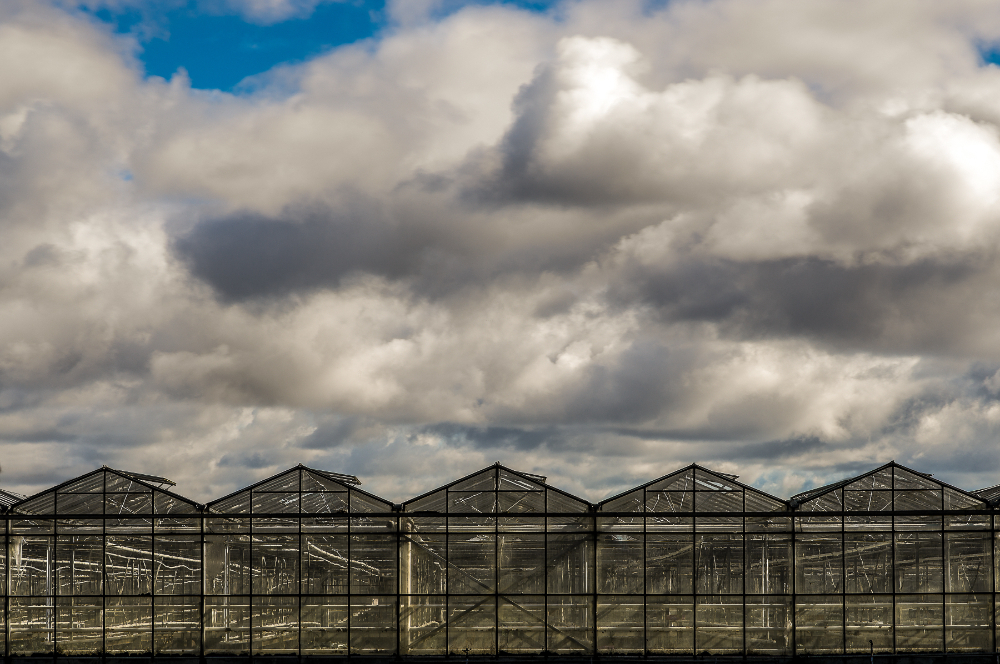When Mother Nature decides to unleash her fury, there is nothing we can do but be prepared. A severe weather event such as a hurricane are unpredictable forces of nature. They can cause heavy damage to your property or even loss of lives. This is why it is important to build strong structures that can withstand even a hurricane.
When building structures in hurricane-prone areas, durability and resilience become the main priorities. One of the most common types of structures for storage, workshops, and even agricultural use are steel barns.
Steel barns are renowned for their strength, but the question remains: can they withstand the immense forces of a hurricane? This article explores the structural integrity of steel barns in the face of hurricanes, discussing their resistance capabilities, materials, construction methods, and the benefits of choosing steel barns for locations at risk of such extreme weather events.
Understanding the Force of Hurricanes
Before evaluating the effectiveness of steel barns during hurricanes, it’s essential to understand the immense forces these storms can generate. Hurricanes are tropical storms characterized by extremely high winds, heavy rain, and the potential for flooding. A Category 5 hurricane, the most severe type, can produce wind speeds of over 157 mph (252 km/h). These high winds can uproot trees, tear off roofs, and destroy buildings that are not designed to withstand such intense forces.
The storm surge, which is the abnormal rise in water levels due to a hurricane, can also cause catastrophic flooding. As the water surges over coastal areas, it can inundate buildings and structures that are not elevated or properly reinforced. While heavy rainfall can lead to localized flooding, strong winds are the primary cause of structural damage during a hurricane.
Steel Barns: The Basics
Steel barns are prefabricated structures made primarily of steel, including metal frames, walls, and roofing. They are widely used in agricultural settings for storing equipment, housing livestock, or as workshops. In addition to agriculture, steel barns are also popular for use as garages, storage units, and even homes due to their flexibility, durability, and cost-effectiveness.
The primary advantage of steel barns is their resilience. Steel is a highly durable material that is resistant to rot, termites, and other issues that can affect wooden structures. Additionally, steel can be reinforced to support heavy loads, making it an ideal material for structures in areas where weather conditions can be harsh.
How Steel Barns Stand Up to Hurricanes
Steel barns, when designed and constructed with hurricane resistance in mind, can offer exceptional durability against the forces of hurricanes. Several factors contribute to the ability of steel barns to withstand high winds, heavy rains, and storm surges.
Wind Resistance
Steel is inherently strong and rigid, making it well-suited for withstanding high winds. One of the reasons steel barns can be hurricane-resistant is their ability to remain intact under strong gusts. Unlike wood or other materials that may splinter or become dislodged, steel frames can resist bending or breaking. However, not all steel barns are built the same, and their wind resistance will depend on several factors, including the quality of materials, construction standards, and design elements.
The strength of a steel barn’s frame is a critical component of its ability to withstand hurricanes. The frame supports the entire structure, and a properly designed frame will allow the barn to distribute wind loads more efficiently, preventing localized failure. Strong steel beams, trusses, and steel columns can support high winds by absorbing and dispersing the wind force.
Moreover, steel barns can be designed with features that improve their resistance to wind. For instance, the use of reinforced framing systems, diagonal bracing, and anchoring systems can help prevent the barn from shifting or collapsing during a hurricane. By incorporating these structural reinforcements, steel barns can resist wind speeds of up to 150 mph (241 km/h) or more, depending on their construction.
Roof Strength
One of the most vulnerable parts of any structure during a hurricane is the roof. High winds can easily tear off roofing materials, causing significant damage to the building and allowing water to enter. In steel barns, the roof is typically made of metal panels, which are fastened tightly to the frame. This tight attachment, combined with steel’s inherent strength, provides significant protection against wind uplift. Steel roofs are much less likely to be lifted or damaged compared to shingles or other roofing materials commonly used in residential buildings.
The roof’s design is also critical to its hurricane resistance. Gabled roofs, for example, are commonly used for steel barns and are less prone to wind damage compared to flat roofs. The sloped nature of a gabled roof allows wind to pass over the structure rather than pushing against it, reducing the risk of uplift. Roofs with additional bracing and reinforcements, such as hurricane straps, can provide even greater protection against wind forces.
Resistance to Debris Impact
During hurricanes, high winds can cause debris, such as fallen trees, rocks, and other objects, to become airborne. This debris can impact buildings, causing significant damage. Steel barns, with their solid metal construction, are better equipped to withstand the impact of flying debris compared to structures made from wood or other materials. The rigid, non-flexible nature of steel helps to absorb impacts, reducing the likelihood of structural failure.
In areas where hurricanes are common, steel barns can be designed with additional protective features, such as reinforced doors, impact-resistant windows, or protective shields for vulnerable areas. These features can prevent debris from puncturing the walls or windows of the barn, further enhancing its ability to withstand storm conditions.
Flood and Storm Surge Resistance
While steel barns are resistant to wind and debris impact, they are not immune to flooding and storm surges. However, some design modifications can mitigate the effects of flooding. For instance, steel barns can be elevated on platforms or stilts to prevent water from reaching the structure’s base during storm surges or heavy rainfall. This is particularly important in coastal areas where flooding is a significant concern during hurricanes.
In some cases, steel barns can also be designed with water-resistant coatings or finishes to prevent corrosion from prolonged exposure to water. However, floodwaters can still damage the interior of the barn, particularly if the barn is used for storage or housing equipment. In these situations, elevating valuable equipment or using flood barriers around the perimeter can help protect the contents of the barn.
Advantages of Steel Barns in Hurricane-Prone Areas
There are several key advantages to choosing steel barns for hurricane-prone areas:
1. Durability
Steel barns are built to last. They are less susceptible to rot, termites, and other issues that plague wooden barns, making them a long-term solution for homeowners in hurricane-prone areas. Steel’s ability to withstand extreme weather conditions, including high winds and heavy rainfall, makes it one of the most durable materials for constructing hurricane-resistant buildings.
2. Customizability
Steel barns can be customized to suit the specific needs of the owner. For those in hurricane-prone areas, customization options such as reinforced framing, impact-resistant windows, and stronger roofing materials can be included to enhance the barn’s ability to withstand hurricanes. This flexibility allows owners to create a structure that meets both their functional and resilience needs.
3. Lower Maintenance
Steel barns require minimal maintenance compared to other materials like wood. They do not need to be treated for pests, rot, or weathering, which can be costly and time-consuming. Additionally, their resistance to corrosion and damage from the elements reduces the need for frequent repairs, saving both time and money in the long run.
4. Cost-Effectiveness
Although steel barns may have a higher upfront cost than wooden barns, their long-term durability and low maintenance requirements can make them more cost-effective in the long run. Steel barns are built to last, and the need for repairs and replacements is significantly lower. This makes them an ideal investment for homeowners in areas prone to hurricanes and other extreme weather conditions.
Conclusion
There is no doubt that hurricanes are one of the most destructive forces of nature. Bracing for the hurricane season is crucial.
Steel barns, when properly designed and constructed, can be highly resistant to hurricanes. Their durability, wind resistance, and ability to withstand debris impacts make them an excellent choice for buildings in hurricane-prone areas. While they are not entirely immune to the effects of flooding and storm surges, design modifications such as elevating the structure and reinforcing vulnerable areas can enhance their flood resistance.
In areas where hurricanes are a constant threat, investing in a steel barn offers numerous benefits, including long-term durability, customizability, and low maintenance. When combined with additional protective features such as reinforced roofing, framing, and impact-resistant windows, steel barns can provide a reliable and cost-effective solution for homeowners looking to protect their property from the destructive forces of hurricanes.

